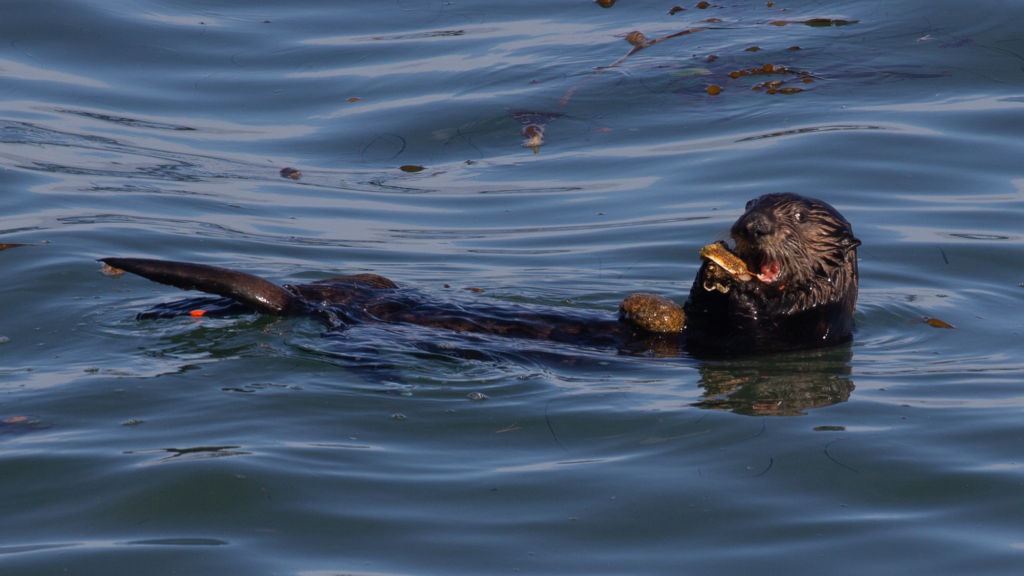Hungry sea otters have figured out a workaround when they want to open up a crustacean’s shell without hurting their teeth: by using tools. The furry marine mammals are vital to California’s kelp forests and can eat 25 percent of their own body weight per day. They particularly love to eat large abalone and sea urchins, and can keep the urchins from taking over marine ecosystems. They will also switch to clams, mussels, crabs, and small marine snails when their preferred prey becomes depleted.
Chomping on all of those hard shelled organisms can cause tooth damage, so sea otters–particularly females–use tools to eat larger prey. The findings are described in a study published May 16 in the journal Science.
Southern sea otters are considered a threatened species, with only about 3,000 in California. Their primary threats are prey, entanglement in commercial fishing gear, oil spills, disease, and shark predation, according to the Marine Mammal Commission.
[Related: These clever cockatoos carry around toolkits to get to food faster.]
In the study, a team from The University of Texas at Austin, University of California, Santa Cruz, and Monterey Bay Aquarium worked with volunteer “otter spotters” to follow 196 radio-tagged southern sea otters off the coast of California. They monitored how these threatened marine mammals use tools–including trash, shells, and rocks–to break open prey. They also pinpointed some links to their dietary patterns and dental health.
“Tools enable otters to specialize on different diets (when preferred prey are limited) that they otherwise would not be able to eat without the use of tools,” study co-author and UT Austin biologist Chris Law tells PopSci. “This allows them to maintain their energetic requirements even though their preferred prey are depleted.”
When food resources dwindle or disappear, feasting on crabs, clams, mussels and small marine snails with hard shells can damage their teeth when prying them open. Their tooth condition is important to survival. If they become too worn down or damaged, the otters could starve. The study found that female otters had less tooth damage than male otters did and are more likely to use tools.
“Females raise pups, which is [a] very energetically costly thing to do. These results suggest that tool-using behavior enables female otters to overcome the mechanical constraints of processing harder prey associated with their smaller body sizes,” says Law. “We found that females that used tools consumed prey items that were 21 to 35% harder compared with male tool users and non–tool users despite their smaller heads and weaker biting ability compared with that of males.”
[Related: Bears can count, take selfies, use tools, recognize supermodels, and even open car doors.]
Female bonobos, chimpanzees, and dolphins are also known to use tools more than their male counterparts. Scientists suspect it could also be due to the taxing work of raising offspring. Females are also often the ones who will pass down tool-use behavior to offspring.
In future studies, Law hopes to examine whether individual otters that use tools also have greater reproductive success.
>>> Read full article>>>
Copyright for syndicated content belongs to the linked Source : Popular Science – https://www.popsci.com/environment/sea-otters-tools/
